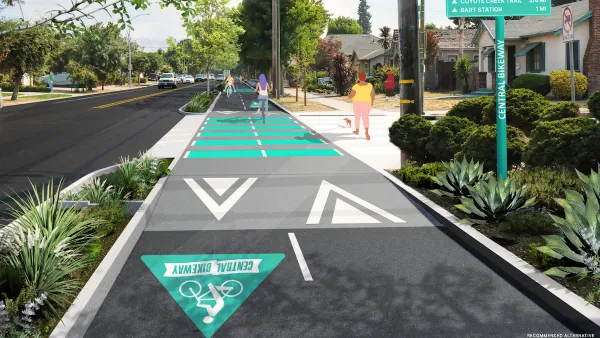As the Metropolitan Transportation Authority grapples with a $16 billion deficit, smashed train windows are adding to the cost.

A trend in subway window-smashing has cost the Metropolitan Transportation Authority about $300,000, twice the amount budgeted for these repairs through August, reports Mihir Zaveri.
Starting early on in the coronavirus lockdown, such vandalization has been sustained and even increased in severity, says Zaveri:
Transportation officials in New York City first began seeing broken windows on subway cars, mostly on the 2, 3 and 7 lines, in April. On one day in mid-July, nearly 50 windows across three 7 trains were smashed. Then this week, the problem seemed to have intensified again: about 60 windows on several 7 trains were found shattered with what officials said was a “blunt instrument."
During a time of widespread financial hardship and an increase in crime and violence, the MTA is contending with an economic difficulty of its own, a $16 billion deficit.
"Faced with the multibillion-dollar deficit, the agency is eyeing a number of cost-cutting measures that could drastically alter how the city runs its subways, including reducing service, cutting the transit work force, scrapping infrastructure improvements and taking on more debt," writes Zaveri.
FULL STORY: Smashed Windows on Subway Cars Have Cost the M.T.A. $300,000

Planetizen Federal Action Tracker
A weekly monitor of how Trump’s orders and actions are impacting planners and planning in America.

Silicon Valley ‘Bike Superhighway’ Awarded $14M State Grant
A Caltrans grant brings the 10-mile Central Bikeway project connecting Santa Clara and East San Jose closer to fruition.

Amtrak Cutting Jobs, Funding to High-Speed Rail
The agency plans to cut 10 percent of its workforce and has confirmed it will not fund new high-speed rail projects.

California Set to Increase Electric Truck Chargers by 25%
The California Transportation Commission approved funding for an additional 500 charging ports for electric trucks along some of the state’s busiest freight corridors.

21 Climate Resilience Projects Cancelled by the EPA
The federal government has pulled funding for at least 21 projects related to farming, food systems, and environmental justice to comply with one of Trump’s early executive orders.

Trump Executive Order on Homelessness Calls for Forced Institutionalization
The order seeks to remove legal precedents and consent decrees that prevent cities from moving unhoused people from the street to treatment centers.
Urban Design for Planners 1: Software Tools
This six-course series explores essential urban design concepts using open source software and equips planners with the tools they need to participate fully in the urban design process.
Planning for Universal Design
Learn the tools for implementing Universal Design in planning regulations.
Yukon Government
Caltrans
New Jersey Institute of Technology
Mpact (founded as Rail~Volution)
City of Camden Redevelopment Agency
City of Norman, Oklahoma
City of Portland
City of Laramie





























